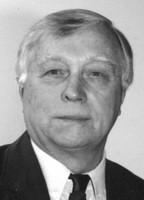Effects of third physical education lesson on primary pupils' body conditioning process
Фотографии:
ˑ:
Honoured worker of physical culture, Dr.Hab., Professor L.A. Semenov
Surgut State Pedagogical University, Surgut
Keywords: third Physical Education lesson, primary pupils, general physical fitness, sportization, targeted management.
Background. It was in October 2010 that the long-awaited and groundbreaking governmental decision was made and the third Physical Education lesson was introduced by the Ministry of Education and Science of the Russian Federation Order #1494/19-IK of 08.10.2010 “On the Third Physical Education Lesson” in the Russian school general education system. The decision was substantiated by a few experimental studies touching upon benefits of the third Physical Education lesson for the primary pupils' health [1, 5, 6, 9 et al]. However, practical benefits of the third Physical Education lesson still need to be explored in more detail.
Objective of the study was to assess the general trends in the practical effects of the third Physical Education lesson mass implementation project as verified by the general physical fitness progress rates of the primary pupils (1-4 grades).
Why the primary pupils' general physical fitness is in the focus? Mostly due to the fact that it is the general physical fitness composed of a variety of key physical qualities (mostly endurance, strength, flexibility, speed and speed strength) that determines the human morphology and functionality formation process and is pivotal for the individual health standards. In addition, the GTO Complex system reinstatement project ongoing in Russia was largely designed to give a high priority to the children and adolescents’ body conditioning initiatives.
As far as the subject category is concerned, it should be mentioned that it is the primary school age (7-11 years) that is commonly known to be the most favourable time for virtually every physical quality being basically established and, unless this basis is formed, the time for the individual kinesiological resource formation may pass, as stated by V.K. Bal'sevich [2]. It is important to note that presently school entrants are increasingly tested physically weak and unfit [3, 4 et al] and such an alarming trend forces the national education system to give a top priority to the body conditioning efforts.
Methods and structure of the study. The study made an emphasis on a fact-finding aspect and applied a set of education process tests as the key method at one of the municipal school districts of the Sverdlovsk region, the tests being performed prior to and after the school year of 2011-12, the second year of the third Physical Education lesson implementation project (since the first year was too overburdened by a raft of start-up challenges to expect immediate and notable improvements). Subject to the tests were 2224 1-4- graders including 1152 boys and 1072 girls sampled in thirteen general education schools.
In addition to the analysis of the practical benefits of the third Physical Education lesson as verified by the general physical fitness progress rates in the education process, the test data of the 2011-12 year were compared with those of the 2012-13 year. The children’s general physical fitness progress was rated by the standard rating tests recommended by the Russian Physical Culture Research Institute within the frame of the Russian Schoolchildren Physical Fitness Monitoring Project including the following tests: 30m (speed rating) sprint test; 1000m (endurance rating) race test; standing long jump (speed-strength rating) test; prone trunk lifting (girls’ strength rating) test; pull-ups on a high bar (boys’ strength rating) test; and straight leg stretch (flexibility rating) test.
The above test methods are generally similar to the ones applied in the traditional and popular Russian Physical Education curriculum developed under a leadership of V.I. Liakh [8] with the relevant age-specific progress rating criteria. The only difference is that the old 6-minute race test was substituted by the 1000m race test, with the new test rates being harmonised with the traditional ones.
Furthermore, the general physical fitness progress rating tests to assess the benefits of the third Physical Education lesson were driven by the “deviations-centred approach” that means that the test data arrays prior to and after the school year (and the 2012 versus 2013 comparisons) were primarily analysed to find the numbers of the subjects tested with deviations from the age-specific standards for one or another physical quality.
Study results and discussion. Given on Figures 1 and 2 hereunder are the general variation trends in the numbers of the subjects tested with the low progress in general physical qualities. The physical progress rates given on Figure 1 are indicative of a minor physical progress in the boys’ group, as verified by some contraction of the numbers of boys tested with the underdeveloped physical qualities including endurance (minus 4%), speed strength (minus 3%) and speed (minus 5%).
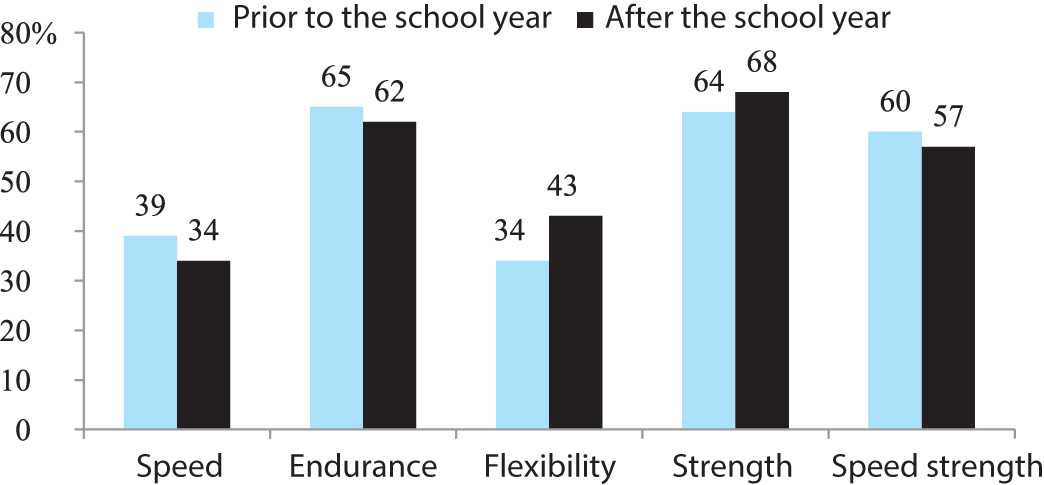
Figure 1. Primary schoolboys tested with the low progress in general physical qualities in the third Physical Education lesson implementation project
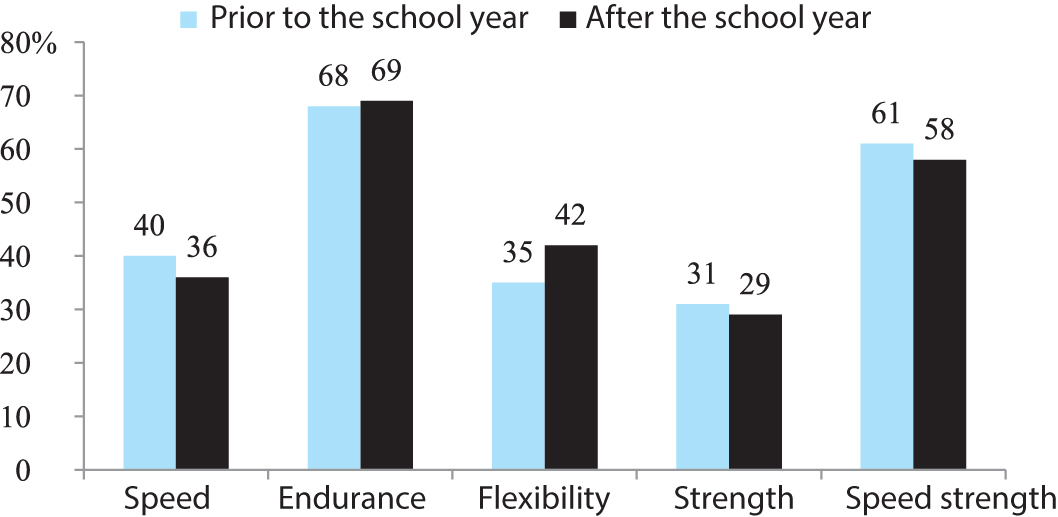
Figure 2. Primary schoolgirls tested with the low progress in general physical qualities in the third Physical Education lesson implementation project
It should be noted that the share of boys tested with the low progress in the endurance and speed strength rates remained very high, whilst the strength and flexibility rates slightly grew: see Figure 1. It were the endurance, strength and speed strength qualities in the boys’ group; and the endurance and speed strength qualities in the girls’ group that showed the lowest progress for the test year: see Figure 2. Furthermore, the share of girls tested with the low speed strength progress rate dropped insignificantly for the year (by 3%), with the endurance rate staying virtually the same (68% prior to and 69% after the course). The girls’ progress rates in the more “advantageous” physical qualities (strength, flexibility and speed) were also insignificant if any, with the shares of the schoolgirls tested with the low progress in speed and strength after the yearly course slightly reduced (by 4% and 2%, respectively) and in flexibility tests increased (by 7%).
In the grade-specific comparisons, we found the general physical fitness progress rates being qualities-and gender-specific. Thus the numbers of the boys and girls with the low speed strength rates was tested to fall (by 2-3%) for the year in every school grade; whilst the flexibility rates in both of the gender groups and every grade were tested to regress. The shares of boys tested with the low strength progress somewhat dropped after the first grade (by 4%); and grew in the second (by 1%), third (by 13%) and fourth (by 3%) grade. The shares of the girls tested with the low strength rates were found to increase in the first, second (by 11%) and fourth (by 4%) grades and fall (by 9%) in the third grade.
The study found some gender- and grade-specific differences in the numbers of the subjects who failed in the endurance tests. Thus the boys’ groups showed some improvement by the year end – i.e. contraction of the numbers of failed tests – in the first, third and fourth grades albeit some growth of the numbers in the second grade. The girls’ groups were tested with some fall in the numbers of test failures only in the third grade.
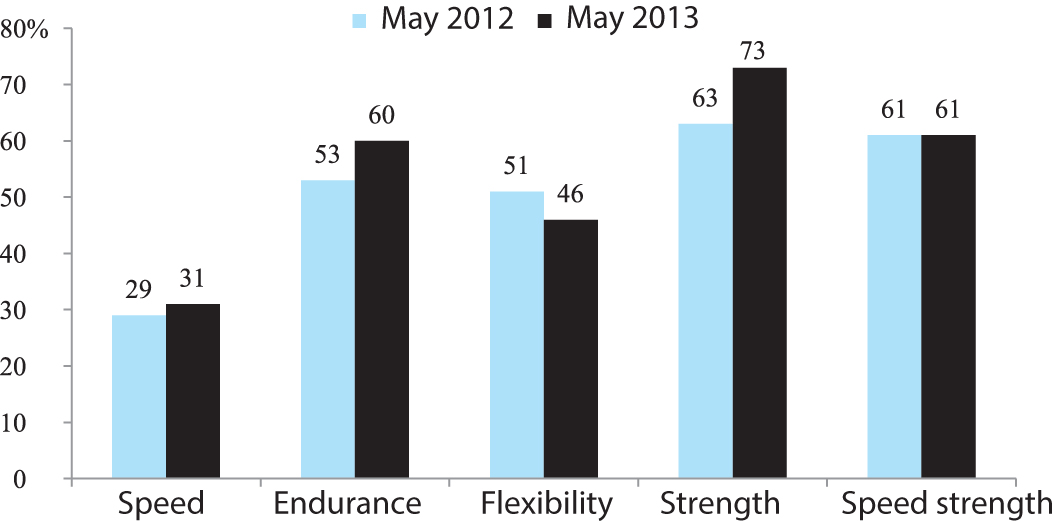
Figure 3. Progress data of the 4th grade schoolboys tested with low progress in general physical qualities after the second and third years of the third Physical Education lesson implementation project
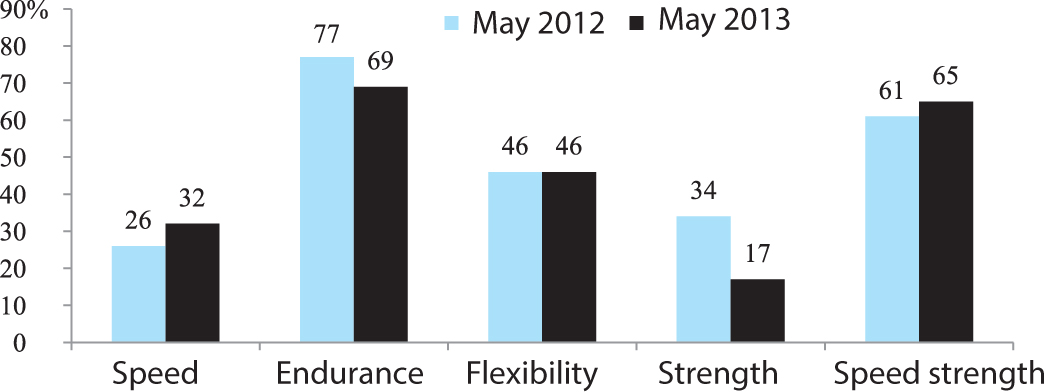
Figure 4. Progress data of the 4th grade schoolgirls tested with low progress of general physical qualities after the second and third years of the third Physical Education lesson implementation project
Given on Figures 3 and 4 are the progress data of the 4th graders tested with the low progress in general physical qualities after the second and third years (2012 and 2013, respectively) of the third Physical Education lesson implementation project (in application to the children completing the primary school course).
The above data show virtually no physical progress after the third year of the third Physical Education lesson mass implementation project. Thus the boys were tested with an insignificant progress (as verified by some drop in the numbers tested with low development rates) only in the flexibility rates albeit no progress was found in the other tested physical qualities: see Figure 3. The girls showed a notable progress only in the abdomen muscle strength building tests; plus some progress in the endurance tests (as verified by some fall in the numbers of failed tests): see Figure 4. But the tests still showed a regress in the speed and speed strength rates, whilst the flexibility rates stayed the same.
Conclusion. The study data and analyses showed the third Physical Education lesson mass implementation project at general education schools being of no positive effect in fact – as verified by the progress rates in the primary pupils' general physical qualities. At this juncture the project has still created an important prerequisite for the children’s further physical fitness improvement initiatives. For success of the initiatives, it might make sense to revise the physical education process vector in the primary school system to give a higher priority to the body conditioning initiatives. The initiatives may be facilitated by the sportization of physical education starting from the primary school age to take full advantage of the modern sport technologies and tools to secure progress in the body conditioning process, step up the intensity rates of the physical education lessons and encourage the children’s motivations for the school physical education.
References
- Astakhov A.V. Osobennosti organizatsii urokov po fizicheskoy kulture pri trekhchasovoy uchebnoy nagruzke [Features of organization of physical education lessons within three-hour training load]. Fizicheskaya kultura: vospitanie, obrazovanie, trenirovka, 2007, no. 1, pp. 14-15.
- Bal'sevich V.K. Ontokineziologiya cheloveka [Human Ontokinesiology]. Moscow: Teoriya i praktika fiz. kultury, 2000, 275 p.
- Baranov A.A., Kuchma V.R., Sukharev L.M. Fizicheskoe razvitie detey i podrostkov na rubezhe tysyacheletiy [Physical development of children and adolescents at the turn of the millennium]. Moscow: Scientific Center for Children's Health RAMS publ., 2008, 216 p.
- Vilenskaya T.E. Aktualnye determinanty sovershenstvovaniya fizicheskogo vospitaniya uchashchikhsya mladshikh klassov [Actual determinants of improvement of primary pupils' physical education]. Fizicheskaya kultura: vospitanie, obrazovanie, trenirovka, 2009, no. 3, pp. 2-6.
- Golovina L.L., Kopylov Y.A., Polyanskaya N.V. Tretiy urok fizicheskoy kultury v obshcheobrazovatelnoy shkole [Third lesson of physical education in secondary school]. Fizicheskaya kultura: vospitanie, obrazovanie, trenirovka, 2006, no. 3, pp. 55-58.
- Kopylov Y.A., Polyanskaya N.V., Ivashina I.V. O tretem uroke v nachalnykh klassakh [Third lesson in primary school]. Fizicheskaya kultura v shkole, 2014, no. 5, pp. 7-11.
- Lubysheva L.I. Sportizatsiya obshcheobrazovatelnykh shkol Rossii: novye vektory [Sportization of Russian general education schools: new vectors]. Fizicheskaya kultura: vospitanie, obrazovanie, trenirovka, 2007, no. 1, pp. 63-65.
- Lyakh V.I., Zdanevich A.A. Kompleksnaya programma fizicheskogo vospitaniya uchashchikhsya I-XI klassov obshcheobrazovatelnoy shkoly: programmy obshcheobrazovatelnykh uchrezhdeniy [Integrated physical education program for I-XI-graders of general education school: programs of general education institutions]. Moscow: Prosveshchenie publ., 2011, 128 p.
- Obukhova N.B. Standartnaya trenirovochnaya programma dlya razvitiya skorostno-silovykh kachestv u detey 9-10 let [Standard training program for speed-strength qualities development in 9-10 year-olds]. Fizicheskaya kultura: vospitanie, obrazovanie, trenirovka, 2002, no. 4, pp. 33-34.
Corresponding author: zdormon@gmail.com
Abstract
The article gives results of a fact-finding study of the general effects of the third Physical Education lesson on the primary pupils' body conditioning process at general education schools of Russia. The study data and analyses showed the educational experiment being of no positive effect as verified by the progress rates of the children’s general physical qualities. Based on this finding we came to conclusion that the third Physical Education lesson implementation project will be rather considered a trial of the children’s Physical Education progress that will ideally require the primary school physical education system to be reformed with a special emphasis on the body conditioning practices. We believe that the sportization of physical education of primary pupils may be very important in this context, and the training process efficiency may be further improved if a high priority is given to the targeted physical education management system.


